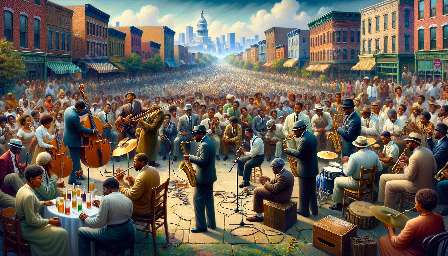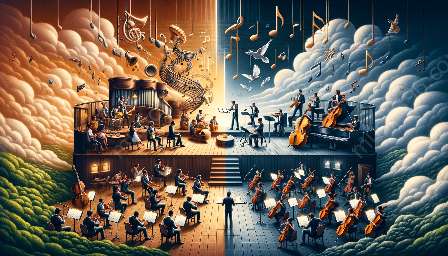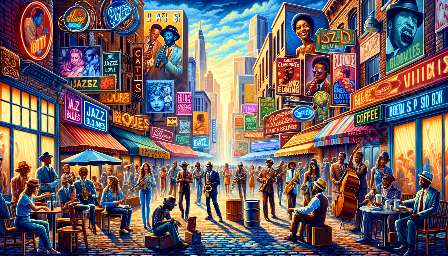Music is a universal language that has the power to bring people together, and the genres of jazz and blues have played a significant role in shaping the music industry. As technology continues to evolve, it has had a profound impact on the production and distribution of jazz and blues music. This article will explore the intersection of technology, ethnomusicology, and the evolution of jazz and blues, shedding light on the ways in which advancements in technology have influenced the creation and dissemination of these iconic musical genres.
Ethnomusicology of Jazz and Blues
Ethnomusicology is the study of music within its cultural and social contexts, providing valuable insights into the historical and cultural significance of jazz and blues music. In the context of jazz and blues, ethnomusicology delves into the evolution of these genres, their roots in African and African-American musical traditions, and their impact on society. The study of ethnomusicology allows for a deeper understanding of the sociocultural factors that have shaped jazz and blues music, contributing to their enduring relevance and influence.
The Evolution of Jazz & Blues
Jazz and blues music have a rich historical legacy that is deeply intertwined with the African-American experience, particularly in the United States. From the early roots of blues in the Mississippi Delta to the improvisational nature of jazz in New Orleans, these genres have continually evolved, adapting to changing social, political, and technological landscapes. The evolution of jazz and blues reflects the resilience and creativity of the artists who have contributed to their development, shaping the musical landscape for generations to come.
Impact of Technology
Advancements in technology have revolutionized the production and distribution of jazz and blues music, presenting both opportunities and challenges for artists, producers, and consumers. The recording industry, in particular, has undergone significant transformations with the advent of digital recording techniques, allowing for greater precision and flexibility in capturing the nuances of jazz and blues performances. Additionally, the rise of digital distribution platforms and streaming services has expanded the reach of jazz and blues music, providing global audiences with easier access to diverse musical experiences.
Technological Innovations in Music Production
Technological innovations have had a profound impact on music production, offering musicians and producers a wide array of tools to enhance their creative process. Digital audio workstations (DAWs) have revolutionized the way music is recorded, edited, and mixed, enabling artists to experiment with diverse sounds and arrangements. Furthermore, the use of virtual instruments and software synthesizers has expanded the sonic possibilities of jazz and blues music, allowing for the incorporation of electronic elements while preserving the authenticity of the genres.
Digital Distribution and Online Platforms
The rise of digital distribution and online platforms has transformed the way jazz and blues music is accessed and consumed. Streaming services such as Spotify, Apple Music, and Tidal have become popular channels for listeners to discover new artists and expand their musical horizons. These platforms have also facilitated the global dissemination of jazz and blues music, breaking down geographical barriers and connecting musicians with fans from around the world.
Challenges and Opportunities
While technology has brought about numerous benefits for the production and distribution of jazz and blues music, it has also raised challenges and considerations for artists and industry professionals. The digitization of music has prompted discussions around fair compensation for artists, as streaming royalties and digital downloads have reshaped the economic landscape of the music industry. Furthermore, the prevalence of digital piracy and unauthorized distribution poses threats to the intellectual property rights of musicians, highlighting the need for effective copyright protection and enforcement.
Future Trends and Possibilities
Looking ahead, the future of technology in the production and distribution of jazz and blues music holds exciting possibilities. As emerging technologies such as virtual reality and augmented reality continue to evolve, the potential for immersive music experiences and interactive performances is boundless. Moreover, advancements in artificial intelligence and machine learning present opportunities for innovative collaborations between human musicians and intelligent software, pushing the boundaries of creativity and musical expression.
Conclusion
Technology has fundamentally reshaped the landscape of jazz and blues music, influencing the way these genres are produced, distributed, and experienced. As ethnomusicology provides a context for understanding the sociocultural significance of jazz and blues music, the impact of technology on these genres is an integral part of their ongoing evolution. By embracing the possibilities of technology while addressing its challenges, the future of jazz and blues music remains a vibrant and dynamic frontier, continuing to captivate audiences and inspire future generations of musicians.






























